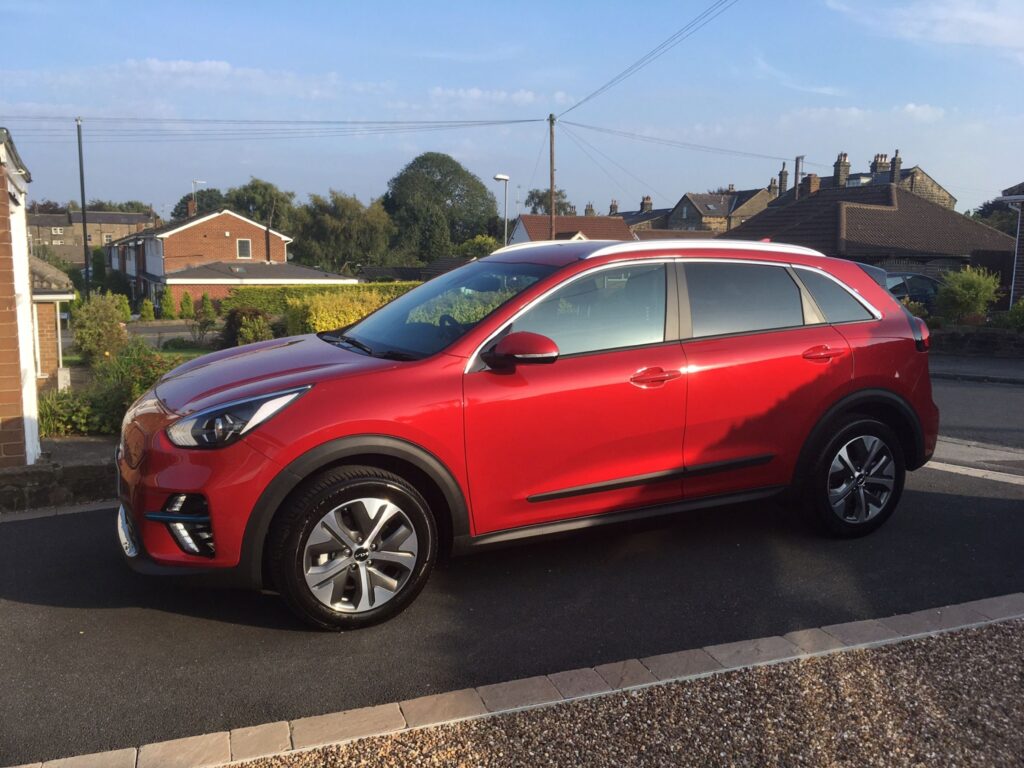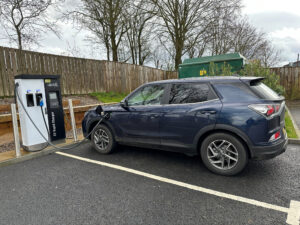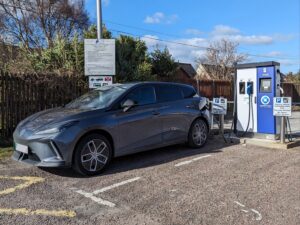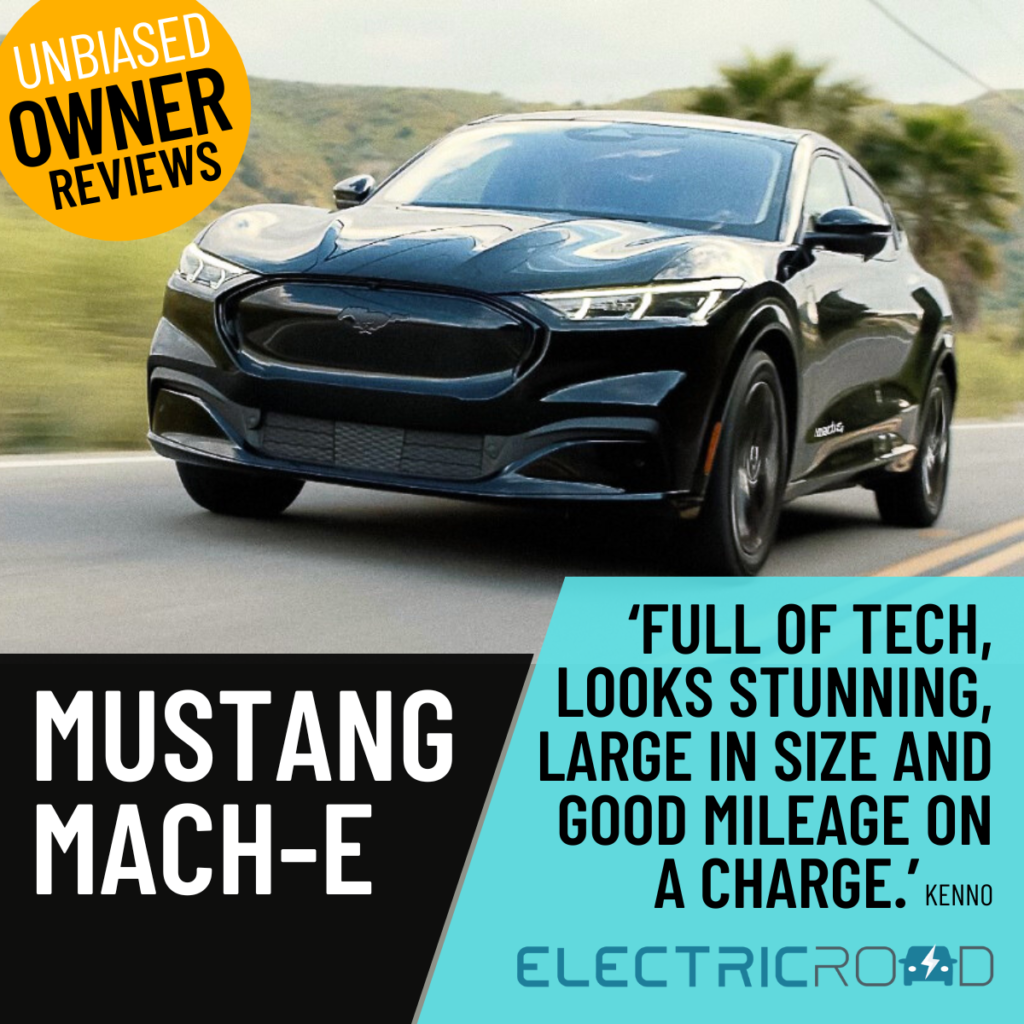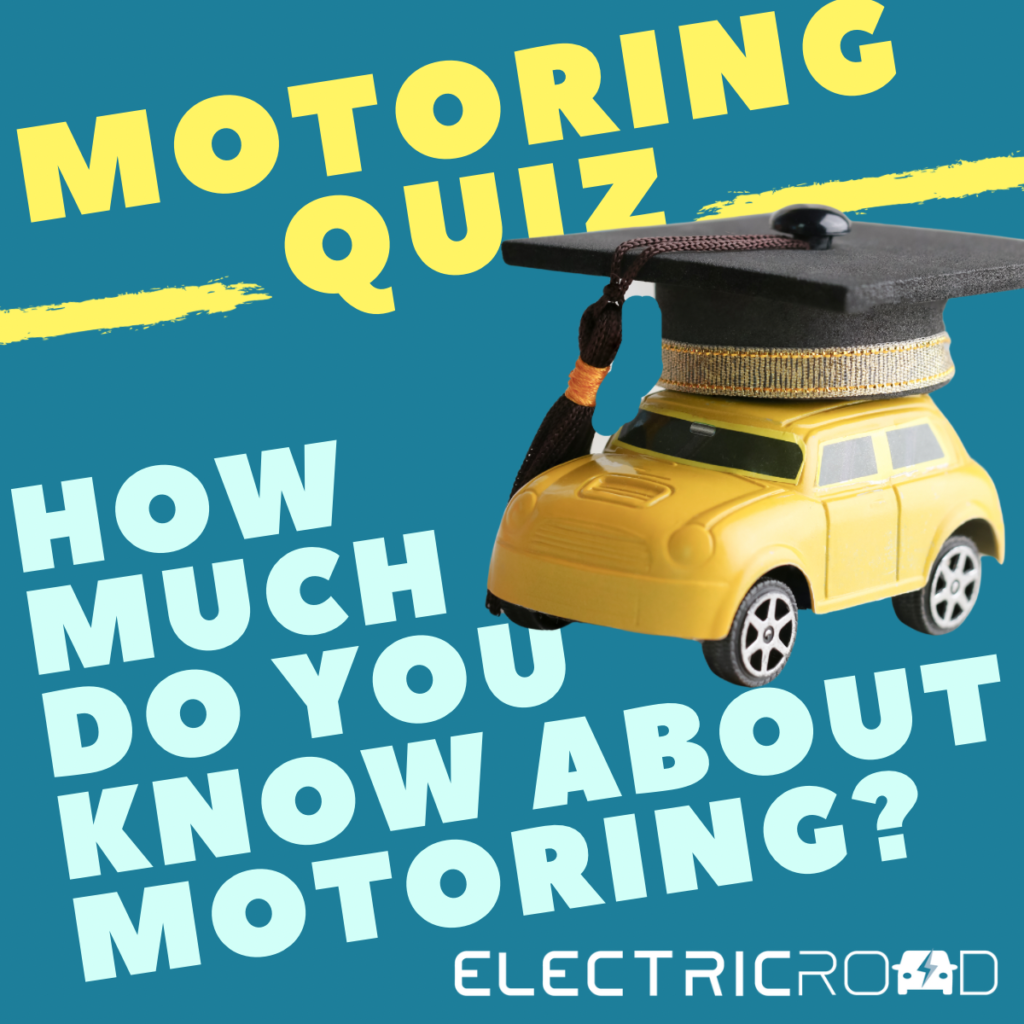Nigel drives a Kia e-Niro 2 64kWh 2021 electric car.
This is Nigel’s first electric car, he’s owned the Kia e-Niro under 1 year and drives 5,000-10,000 miles annually. The current mileage of the car is between 5,000-10,000 miles and he achieves 260 miles range from a full charge.
Why did you choose the Kia e-Niro?
I needed an EV with at least 250 miles range as nearly all my journeys are within 150 miles of home. I also needed a vehicle that could comfortably take 3 passengers with some luggage. I looked at different options during early 2021 and the top 2 were the Kia e-Niro and the VW ID.3. I chose the Kia e-Niro because the government subsidy rules changed and the e-Niro 2 64kW was, at the time, the only EV with 250miles range that still attracted the subsidy.
Sign-up to Electric Road now to receive a FREE ‘Kia e-Niro Guide’, a weekly Newsletter and to win some great prizes!
Positives – List 3 or more reasons why you love this electric car
- The Kia e-Niro is so easy to drive. My wife loves it too and we have to compete to decide who will drive! I tend to use Eco mode and I easily achieve the advertised range in the summer months.
- The equipment level, even for the basic e-Niro 2, is high standard. I like the rear reversing camera and the Apple play function which means I can use Google/Apple maps for navigation.
- When I ordered the Kia e-Niro the standard colour was silver. It took 4 months to be delivered, during which time the standard colour changed to red! I was a little concerned but the red is stunning.
- The scheduled charging function is very useful and important to me. I have an overnight EV tariff, so I use this a lot to keep the e-Niro charged up.
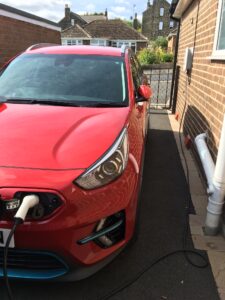
Negatives – List 3 or more things that you really don’t like about this electric car
- I have a 7.2kW charger at home, which I use most of the time. Occasionally I use a rapid (DC) public charger. What became obvious was that the e-Niro is limited to 50kW charge speed and also the charge rates starts to fall quite quickly above about 70%, so charging times were much longer than expected. I suppose this is to protect battery life but it has meant waiting a few times for charging to complete. Also for AC charging the limit is 7.2kW, so 22kW AC chargers are of no benefit to me.
- There is no spare wheel, so you are relying on the repair kit working if you get a puncture!
Have you experienced any faults with the car? If so, what have they been?
In the year I have owned the Kia e-Niro, I have had no faults. It has worked perfectly.
What are the standout technological features of the car?
- I purchased the e-Niro 2, which is the basic model, but even so it has some useful technology features. The driving aids are good, e.g. the rear camera and reversing warning signals. Also, if you stop in a traffic queue and the car in front sets off, you are warned audibly if you are a bit slow setting off! I call this the ‘Wake up, Nigel!’ warning.
- There is a lane control feature which gives an audible warning and a steering tweak if you stray near white road markings. This is very annoying on winding or urban roads, so I tend to turn this off. It is useful for long motorway journeys though.
- The cruise control system is good and has a built-in function to slow the car automatically if you get too close to the car in front.
- The media system is fine with good sound quality and controls.
Surprise us! Tell us something people wouldn’t readily know about this electric car
You save on brake wear. Although the EV is heavy, the battery regeneration function means you hardly ever need to brake hard, except in emergencies. By carefully choosing the level of regeneration depending on driving conditions, you can almost drive without touching the brakes. I will be interested to see when the brakes need replacing.
What electric car(s) are you interested in next and why?
I am interested in the Kia EV6 because it has an external 3kW 240v output. This could potentially be used to power our house. I could then charge the car overnight and use it in the house when electricity prices are high. The EV6 is also a beautiful car and a longer range than the e-Niro.
Outline both positive & negative elements of your home charging unit
I have a myenergi zappi charger because I have solar panels at home. This has been reliable and easy to operate. My charging regime is to either charge at night when the price is low or during the day when it is sunny and I have excess solar power. Leaving aside public charging, this translates to a running cost of less than 1p per mile, which is astonishingly low. On a sunny day I can charge about 50 miles of range or with off-peak overnight charging, about 115 miles. Unless I am planning a long journey, this covers most of my needs. I generally keep the battery charged in the 50% to 80% range.

Outline both positive & negative elements of your electricity supplier & tariff
I have the Octopus Go tariff which has a very cheap rate for 4 hours at night. This is sufficient for my needs. Octopus have been excellent but you need a working smart meter that can provide half hourly readings to get this tariff.
What public charging networks would you recommend to others and why?
I use Pod Point chargers a lot and they seem reliable in most locations, although you need the app on your phone. There are some free Pod Point chargers at some supermarkets. I have used Gridserve at motorway services and these are expensive and unreliable but sometimes necessary. On holidays, we have either stayed at accommodation with a charger or used chargers operated by local authorities which tend to be cheaper and more reliable.
Outline both positive & negative elements of your insurer
I insure my EV through Lloyds Bank. No problems so far!
Itemise how much money you’re saving each month owning & running your MG5 EV
EVs are expensive to buy but in the right circumstances are exceptionally cheap to run. Road tax is free, insurance is lower and charging at home with an overnight tariff is exceptionally good value for money. I save about £750 per year in running costs compared to a Kia Niro petrol hybrid, for example.
See other owner reviews here


